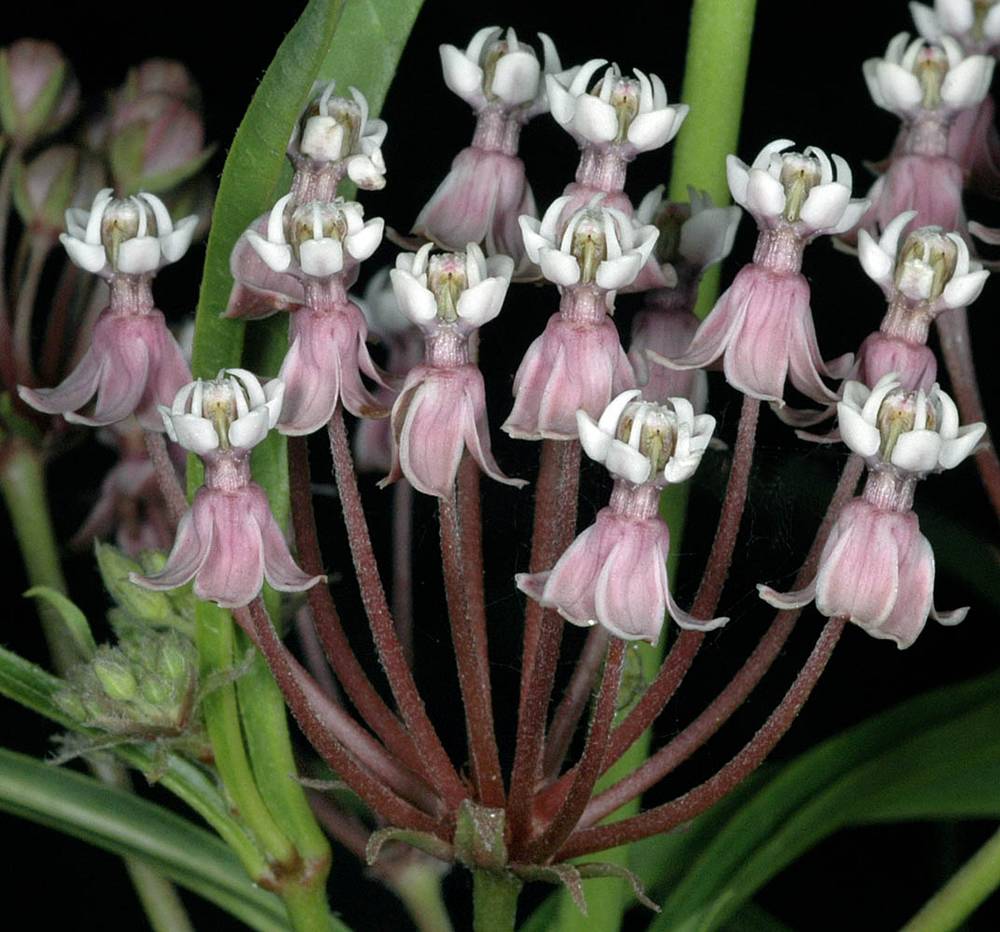Asclepias fascicularis
narrowleaf milkweed
usually more than 6 from base; to 1 m, inconspicuously puberulent to glabrous; little branched but commonly with short, unexpanded branches in leaf axils, rhizomatous.
whorled (commonly 3–5 per node);
blades narrowly linear to narrowly elliptic, 3–12 × 0.1–2.5 cm, bases acute to obtuse;
tips obtuse to acuminate, glabrous or often inconspicuously puberulent below, interpetiolar colleters present; very shortly petiolate.
umbels;
peduncles 2–4 cm, inconspicuously puberulent;
pedicels 0.7–1.5 cm, puberulent.
calyx lobes narrowly deltoid, 1–1.5 mm, minutely pilose to glabrous;
corollas reflexed with spreading lobes; grayish pink, rarely white;
lobes 3–4 mm;
coronas and gynostegia borne on cylindric columns 1 mm tall;
corona lobes hood-like, 1–1.5 mm, white to pinkish, truncate at tips; horns conspicuous and arching over style apex, narrowly acicular.
erect on erect pedicels, narrowly fusiform, 5–12 × 0.7–1 cm, glabrous.
oval, 6–7 mm, with white coma to 2 cm.
Asclepias fascicularis
Valleys, riparian zones, seasonally moist soils, disturbed areas. Flowering Jun–Aug. 50–1600 m. BR, BW, Col, ECas, Lava, Owy, Sisk, WV. CA, ID, NV, WA; south to Mexico. Native.
Very common in California, this species remains common through the Willamette Valley and Columbia River Gorge but otherwise becomes increasingly rare to the north. It is unmistakable in Oregon by virtue of its densely clumped habit and whorled, narrow leaves. But it is quite similar to related species found throughout the rest of North America, especially A. subverticillata and A. incarnata. The plant is rather dingy and weedy in appearance, the small, dull pinkish flowers, though numerous, not producing much visual effect. This species and A. speciosa are the most commonly used host plants of the monarch butterfly in western North America.
Mark Fishbein



